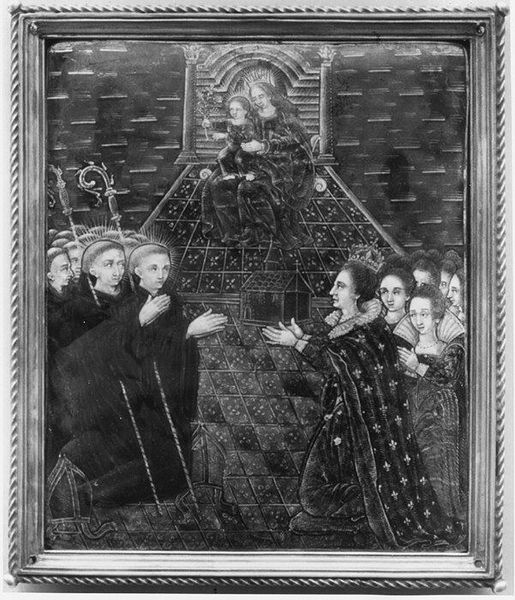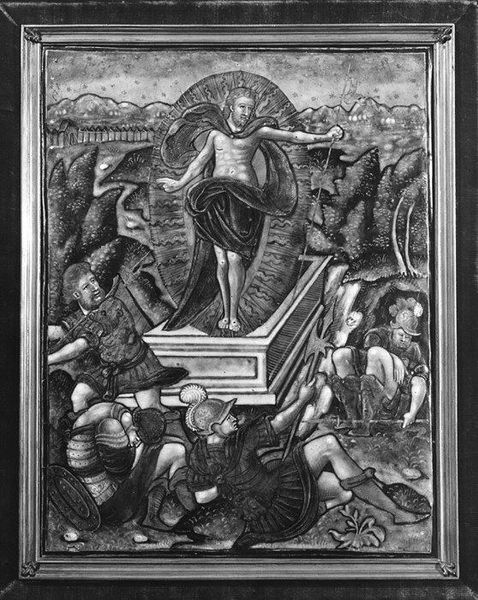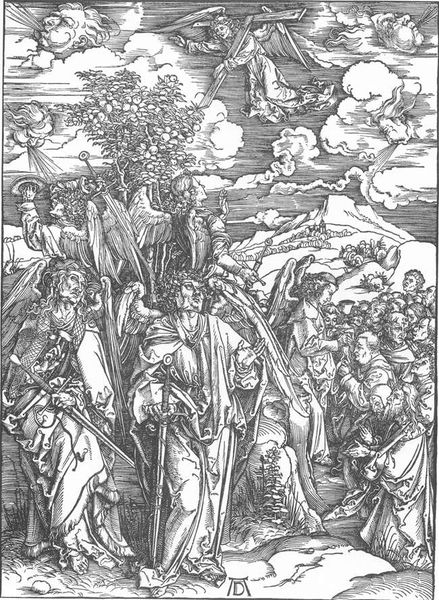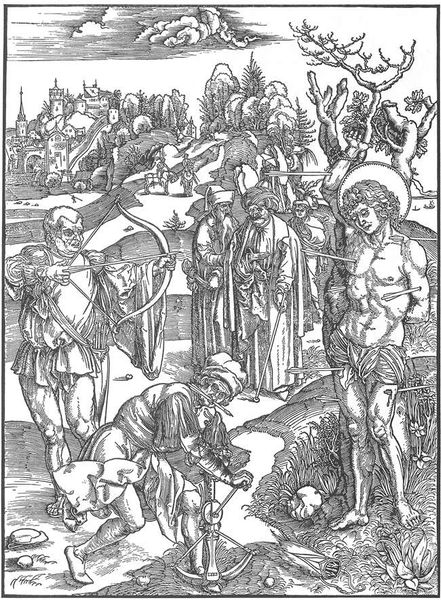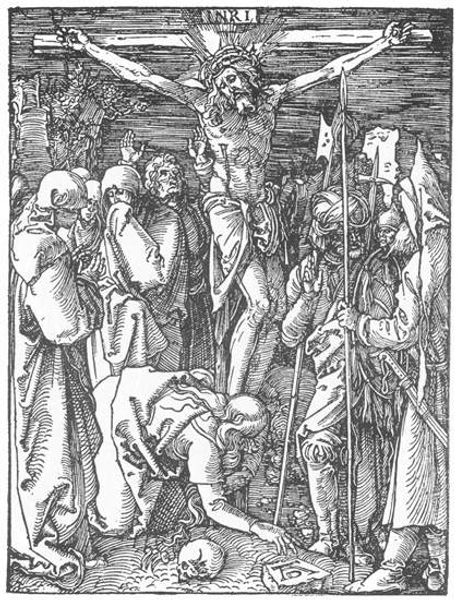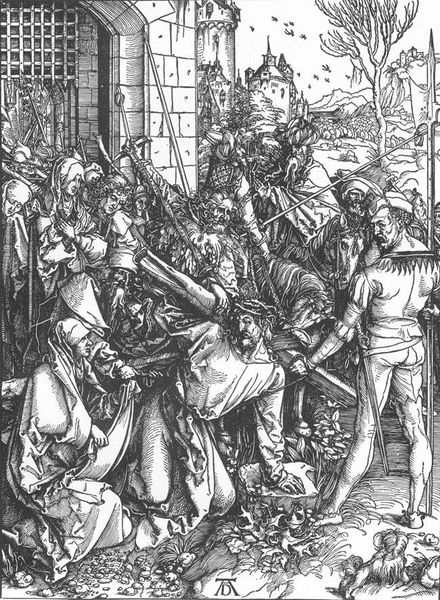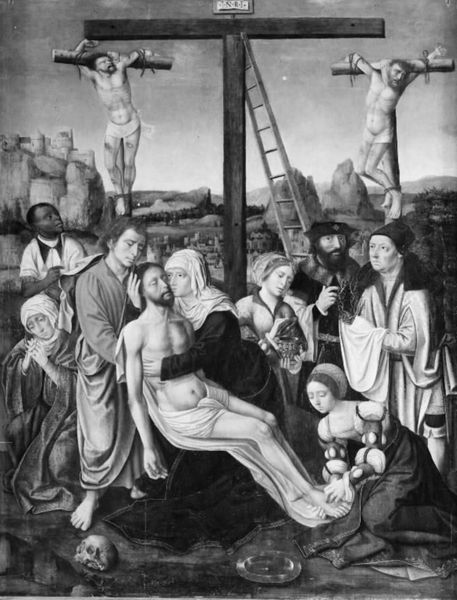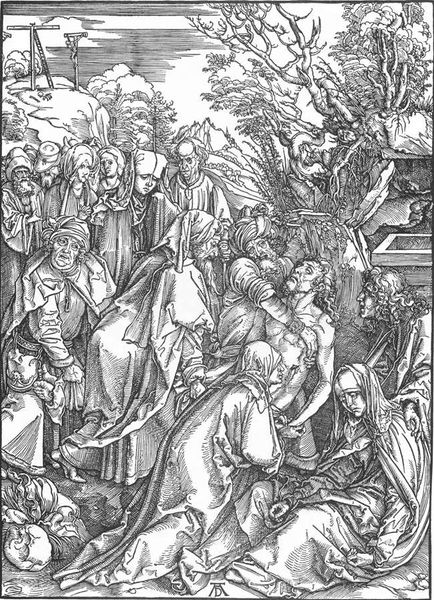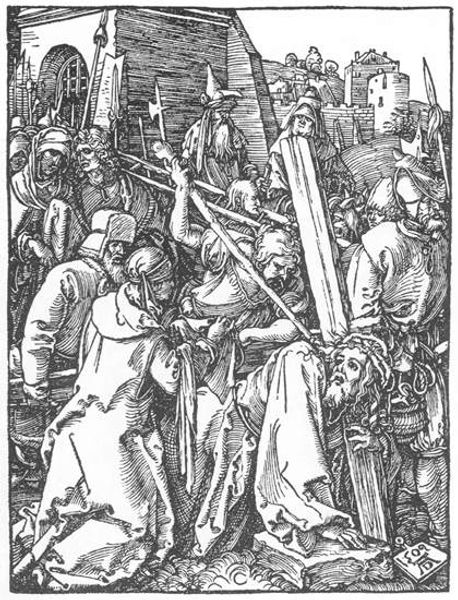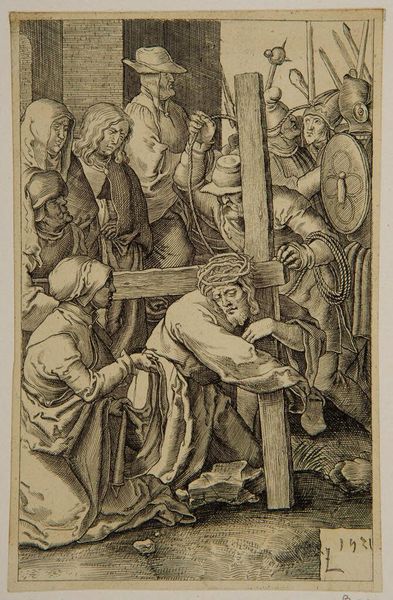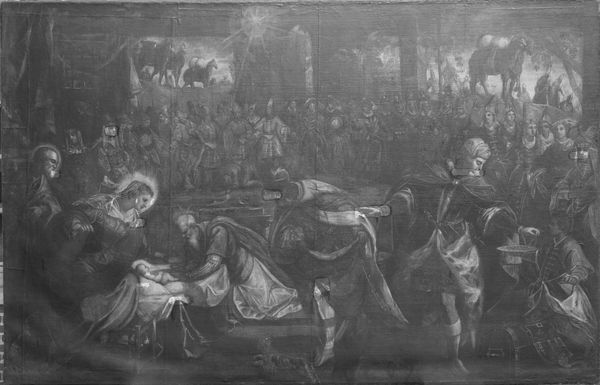
tempera, painting, sculpture
#
narrative-art
#
tempera
#
painting
#
figuration
#
cross
#
sculpture
#
carved
#
men
#
history-painting
#
decorative-art
#
early-renaissance
#
christ
Dimensions: 8 1/2 × 7 in. (21.6 × 17.8 cm)
Copyright: Public Domain
Curator: This tempera painting, entitled "Christ Bearing the Cross," dates back to the Early Renaissance, created between 1500 and 1515 by Jean Penicaud I. It's a powerful narrative scene. Editor: It feels claustrophobic, almost brutally so. Everyone’s crammed into the frame. Even though it’s an older piece, that raw energy just grabs you. Curator: Absolutely. The tight composition emphasizes the social dynamic. We see not just Christ's suffering, but also the figures of authority wielding their power and the bystanders' varied reactions. Penicaud masterfully uses the theme of collective cruelty within the early Renaissance style. Editor: I'm struck by Christ’s gaze, that weariness in his eyes as he’s about to carry that cross—it echoes through centuries of oppression, doesn’t it? It’s both ancient and tragically current. Curator: Indeed, consider how this image functioned within its time. Religious artworks reinforced established power structures. The pathos evoked served specific social functions, reminding viewers of the consequences of sin and the importance of obedience to religious doctrine. But it also humanizes Christ, depicting a shared pain. Editor: Funny though, look how everyone is basically stepping all over him! In bare feet. Literally and figuratively. It seems less like reverence and more about casual, accepted… evil, almost. Like they're performing a duty or walking their dogs in the park on a Sunday. Curator: Your interpretation touches on something crucial. By juxtaposing the sacred and the profane, Penicaud offers a space for critical contemplation of religious authority. Who benefits? Whose narrative is prioritized, and at whose expense? Editor: You know, standing here, the faces around Christ look more empty than angry, now that I give it another gaze. What are they really thinking, these nameless accomplices to his journey? We have some shared cultural inheritance of the meaning in play in this scene. It has seeped so deeply in that now, looking in to see my reflection on its surface, I now see both our visages merged with that of the onlooking crowd! Curator: Art offers these profound moments of recognition. Looking through time. Editor: Yes. Profoundly disturbing.
Comments
No comments
Be the first to comment and join the conversation on the ultimate creative platform.
